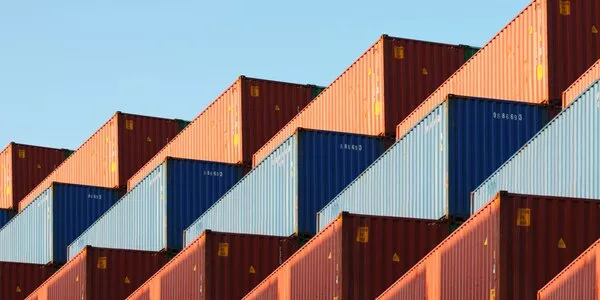
September 2021 - Monthly House Views
Can’t live with it, can’t live without it
During the summer, Delta’s dominance and issues getting people vaccinated generated uncertainties over how long the economic recovery which started earlier in the year could last. Indeed, going into autumn, there is little doubt the public health crisis will be around for a while and continued economic activity may well hinge on how citizens and policymakers decide to “live with Covid”.
The IMF has confirmed its growth forecasts for the global economy (+6.0% in 2021 and +4.9% in 2022), with advanced economies seeing upward revisions, supported by a recovery in consumption, especially of services. The headline figure, however, belies substantial regional disparity. In countries where vaccinations are reaching relatively high rates – such as the United States, the UK and much of Europe – social distancing rules that had been hampering activity have been significantly relaxed – commutes, school runs and holidays abroad have all resurfaced. Even as Covid stays virulent and pervasive, a “new normalcy” is taking root.
However, it’s not brighter everywhere. Some advanced countries remain behind the curve given lower vaccination rates and strict public restriction, such as Japan and Australia, where “Zero Covid” policies remain in force. New Zealand has had to reimpose sanctions, a useful reminder against complacency. The outlook for emerging markets and developing economies has been scaled back for 2021. Emerging economies will broadly suffer from reduced access to the vaccines as well as less support from fiscal and monetary policies.
China, as often is the case, is a special category of its own. The country is facing a deceleration in growth because of weakness in both external demand (slowdown in exports) and domestic demand (decline in consumption due to lockdowns). Compounding this is a regulatory crackdown on domestic technology companies, especially the Golden Dragons (US listed Chinese companies). This partly explains why Chinese equities have had a roller coaster ride this year, spilling over to emerging market assets at large. While a recovery appears underway from deeply oversold conditions, the consequences for investment in China over the long-term remains a matter of intense debate. We continue to hold a position in emerging market equities in many strategies, with the investment case underpinned primarily by attractive valuations. We accept those valuations also come with higher volatility, but for their continued inclusion they must also be justified by an expectation of commensurate return.
Undoubtedly, the public health crisis also continues to cause difficulties for some sectors and production chains. These difficulties are putting pressure on the costs of inputs, which may threaten business margins. Nonetheless, the majority of these recent price pressures reflect temporary factors and we expect inflation to return to trend next year. Our belief is underpinned by the fact labour markets still exhibit significant slack, particularly when viewed through the lens of labour force participation rates, which are well below pre-pandemic levels. Sidelined workers will likely seek work again as income support schemes and school closures end. Moreover, margins for S&P 500 companies in aggregate are at a record-high 14.1% (Q2), indicative that most are managing cost pressures with ease, even if the rhetoric from the CEOs may indicate otherwise.
As economies continue to heal and redefine a new paradigm of how to manage “living with Covid”, central banks – led by the US Federal Reserve – will maintain an accommodating stance, even if they do begin to taper their sovereign bond purchases. The European Central Bank has been the first to do so, announcing on 9 September a reduction in asset purchases via its Pandemic Emergency Purchase Program (PEPP). However, at this stage, the reduction is more symbolic than substantive, with the ECB committing to continue pumping tens of billions of euros of liquidity into market each month. That will be the case for others too as we see out this year.
Bottom line
We believe the case for risk-taking is well supported given a robust economic backdrop and positive momentum for risk assets. Nonetheless, we are wary of expensive valuations. On balance, we are moderately risk-on with a continued preference for equities. Nonetheless, we continue to hold a stable of safe-haven assets to offset risks, particularly those from equities – which are expensive and supported somewhat by heady sentiment. These include cash, government bonds, gold, and defensive alternatives (e.g. low-volatility hedge funds, Tail Risk Protection Note).
As always, our decisions remain rooted in our investment process, the four pillars of which currently indicate the following:
- Economic regime: Our Leading Economic Macro Indicator (LEMI) suggests the global economy is in a state of expansion, which is clearly favourable for risk-taking.
- Valuations: Valuations for equities – the largest source of risk and return in most strategies – remain challenging in absolute terms. However, as we believe central banks have little appetite to raise rates at present, we remain tolerant of higher global equity valuations.
- Momentum: Global equities are in positive momentum versus their ten-month moving average. This is supportive of increased exposure to the asset class.
- Sentiment: Sentiment has fallen back into neutral territory, led by less bullish condition in S&P 500 net speculative positions.
As ever, we are constantly monitoring markets. Should conditions change, particularly with the economic regime or signals from our valuation, momentum and sentiment framework, we will adjust our asset allocation accordingly.
In accordance with the applicable regulation, we inform the reader that this material is qualified as a marketing document. NR84Apr2021




